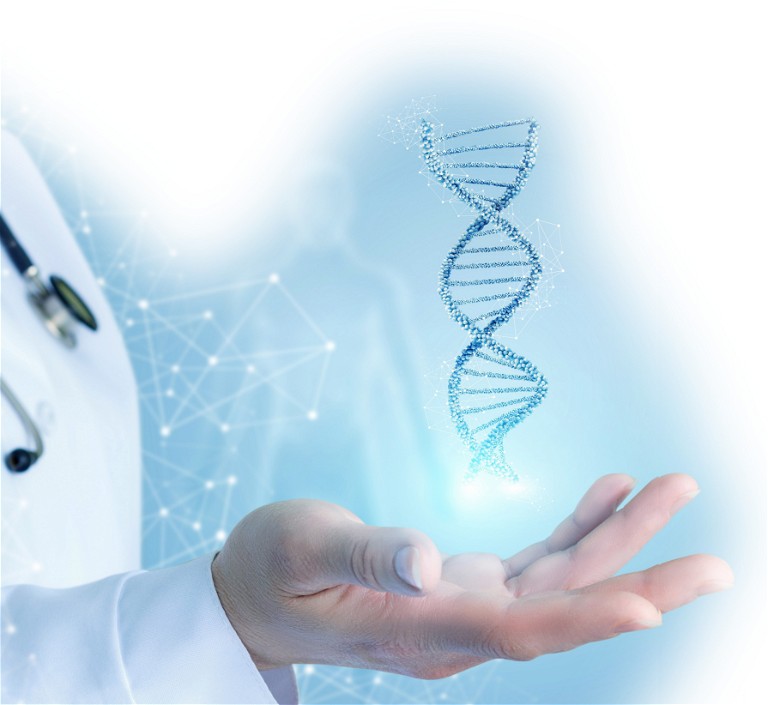Genomics
Precision & Putamen: Optimising Paediatric Gene Therapy
Dr Matt Klein at PTC Therapeutics discusses gene therapies in treating complex neurological diseases, particularly in paediatric cases, where there can be added challenges

IPT: How does the intraputaminal delivery technique work, compared with conventional drug treatments?
Dr Matt Klein: This gene therapy strategy delivers a healthy gene to the location in the body where it is needed the most to treat a disease. In the case of aromatic L-amino acid decarboxylase (AADC) deficiency, the gene therapy is delivered to an area of the brain known as the putamen – akey part of the brain where the gene therapy is needed to improve neurological function. In order to achieve this precise delivery, we rely on an established neurosurgical technique known as stereotactic surgery. The surgeons use special MRIs that provide a map that shows how to get from outside the skull to a precise location inside the brain safely and efficiently. The use of this surgical approach to deliver a gene therapy directly to the brain is an innovative aspect of our gene therapy programmes.
What do you think the future could hold for novel delivery methods in gene therapies?
Given the many benefits of direct gene therapy delivery, including the assurance that the gene therapy product reaches the appropriate anatomic location and that, certainly in the case of our AADC deficiency gene therapy programme, significantly less gene therapy product needs to be administered, which can have potentially important safety implications. There should be increasing interest in utilising direct gene therapy approaches to treat neurological disorders. There is a possibility that this approach to treatment could also extend to disorders of other organs such as the heart, where interventional cardiologists have been using minimally invasive approaches to reach the heart for diagnostic and therapeutic reasons for decades.
“Understanding of the unique challenges of paediatric clinical trials helps minimise the burden of trial participation and helps achieve the collection of quality of data”
What are some challenges in trialling gene therapies in paediatric patients?
Clinical trials in paediatric patients are always challenging – this is especially true for severe paediatric neurological disorders. Our experience in conducting trials in highly disabled children helps to design trials that are feasible and allow for robust evaluation of therapies. For example, for ill children that are in wheelchairs or require mechanical ventilation, travel to study sites can be very challenging. Children with neurological diseases may also be unable to communicate verbally, which makes assessments of the impact of therapies difficult. Often, we need to rely on a parent’s report of a child’s experience in a clinical trial, which can have some drawbacks.
How can these challenges be overcome?
It is important to have clinical trial teams – including those at study sites – that are experienced in the conduct of clinical trials. This experience and understanding of the unique challenges of paediatric clinical trials helps minimise the burden of trial participation and helps achieve the collection of quality of data – which, of course, is very important in clinical trials. In addition, the use of online or virtual visits, which can minimise the number of times patients need to travel to study sites, have become increasingly common. I think, when possible, the use of video conferencing technology is an important advance in the conduct of trials and can have many important impacts, including allowing access to trial participation for many patients.
What trends are you seeing in gene therapies?
There is no question that gene therapy development is ‘hot’ right now. There are increasing numbers of gene therapies in preclinical and clinical development for a number of challenging diseases – both rare and more common. However, I believe we are still in the early stages of the gene therapy revolution. Much more work is needed to optimise gene therapy delivery methods, gene therapy vectors, and gene therapy durability. I believe that in the future we may see more combination small molecule and gene therapies where you may have the ability to use a pill to switch on and off a gene therapy when needed.
What more can be done to help researchers in discovering or optimising future gene therapies?
As a collective industry, we are at the early stages of the gene therapy. There are new learnings and technological advances emerging every week. I think that a continued collaborative effort across academic researchers, industry drug developers, regulatory authorities, and patients will be essential to evolving and optimising gene therapies.
How can genomics benefit from innovative delivery techniques?
I think it allows for more effective therapies for challenging single organ diseases, such as neurological disorders. Delivering drugs at effective levels to the brain has long been a challenge to drug developers. The ability to ensure that sufficient levels of gene therapy product reach the brain – or a particular region in the brain – will certainly benefit efforts to effectively treat neurological disorders.

Dr Matthew B Klein MD, MSc, FACS, is Chief Development Officer at PTC Therapeutics, Inc. Prior to joining PTC, Dr Klein was CEO of BioElectron Technology Corporation, a biotechnology company focused on development of redox active small molecules for mitochondrial disease and related disorders of oxidative stress. Prior to joining BioElectron, Dr Klein was the Auth-Washington Research Foundation Chair of Restorative Burn Surgery at the University of Washington, US. He completed his undergraduate degree at the University of Pennsylvania, where he graduated summa cum laude and Phi Beta Kappa, and received his MD degree with honours from Yale University.